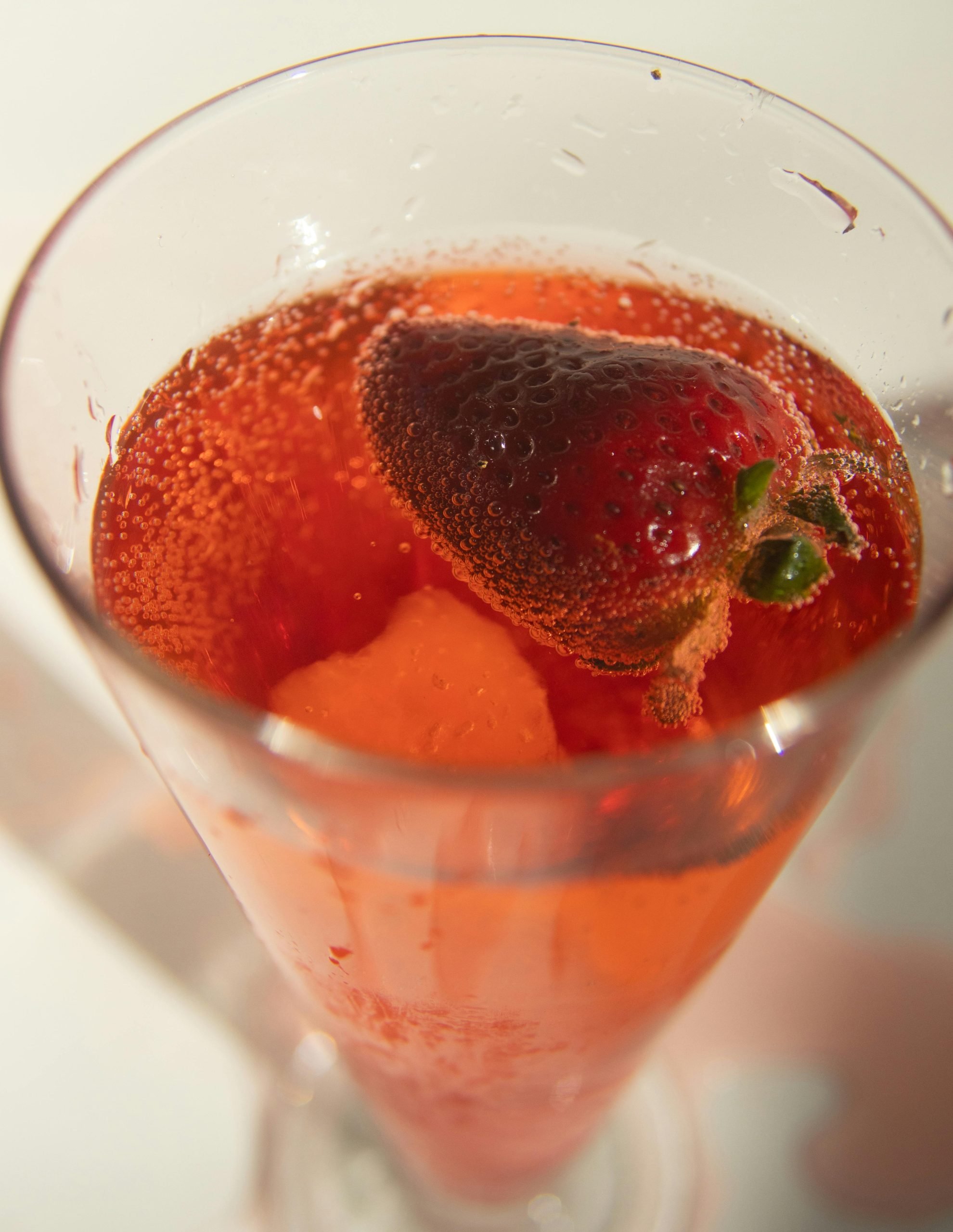Living with diabetes can be challenging, especially when it comes to finding satisfying and healthy snack options. Many store-bought snacks are loaded with added sugars and unhealthy fats, which can wreak havoc on blood sugar levels. However, there is one snack category that diabetics can turn to for their sweet fix – dried fruits. These delectable treats offer a convenient and portable solution and can satisfy your sweet tooth without causing a spike in blood sugar levels.
In this article, we will explore the world of healthy snack options for diabetics and delve into the benefits of dried fruits specifically for individuals managing diabetes. We will discuss the glycemic index and how it plays a crucial role in making wise choices when it comes to dried fruits. Additionally, we will highlight some of the best dried fruits for diabetics, provide tips for portion control, and offer delicious snack ideas incorporating dried fruits. So, let's dive in and discover how you can enjoy dried fruits in moderation as part of a diabetes-friendly diet.
Exploring Healthy Snack Options for Diabetics
When hunger strikes between meals, finding a healthy snack option that won't send your blood sugar levels soaring can be a real challenge. This is where dried fruits come to the rescue. They offer a convenient and portable snack that can help curb cravings and provide a quick burst of energy. But not all dried fruits are created equal, and it's essential to choose wisely.
The Benefits of Dried Fruits for Diabetics
Dried fruits, despite their concentrated sugar content, offer several benefits for individuals managing diabetes. They are packed with essential vitamins, minerals, and fiber, which are vital for overall health and well-being. Additionally, they provide a natural source of energy and can help maintain healthy digestion.
One of the key advantages of dried fruits is their high fiber content. Fiber helps slow down the absorption of sugars into the bloodstream, preventing rapid spikes in blood sugar levels. This can be particularly beneficial for diabetics, as it allows for better blood sugar control.
Dried fruits are also rich in antioxidants, which can help reduce inflammation in the body and protect against chronic diseases such as heart disease and certain types of cancer. They are a good source of vitamins A and C, which play a crucial role in supporting a strong immune system.
Understanding the Glycemic Index
To make informed choices about which dried fruits to consume, it is essential to understand the concept of the glycemic index (GI). The GI ranks carbohydrates on a scale of 0 to 100 based on how quickly they raise blood sugar levels. Foods with a high GI value are rapidly digested and cause a rapid increase in blood sugar, while those with a low GI value are digested more slowly, leading to a gradual rise in blood sugar levels.
For individuals with diabetes, choosing foods with a low GI can help maintain stable blood sugar levels and prevent spikes and crashes. This is particularly important when selecting dried fruits, as they can vary in their impact on blood sugar.
Choosing Dried Fruits with a Low Glycemic Index
When it comes to selecting dried fruits for a diabetes-friendly diet, it's important to choose options that have a low glycemic index. Here are some of the best dried fruits for diabetics:
Apricots: A Sweet and Nutritious Option
Apricots are a delicious and naturally sweet dried fruit option that diabetics can enjoy in moderation. They have a low GI value, meaning they have a minimal impact on blood sugar levels. Apricots are rich in fiber, vitamin A, and potassium. They also contain antioxidants that may help reduce inflammation and protect against certain chronic diseases. Whether enjoyed on their own or added to recipes, apricots can satisfy your sweet tooth without causing a spike in blood sugar.
Dates: A Natural Source of Energy
Dates are a popular dried fruit choice known for their natural sweetness and rich, caramel-like flavor. They are packed with essential nutrients, including fiber, potassium, and magnesium. Dates have a low to medium GI value, making them a suitable option for diabetics when consumed in moderation. They can be enjoyed as a standalone snack or used as a natural sweetener in baked goods or smoothies.
Raisins: A Nutritional Powerhouse
Raisins are a concentrated source of natural sugars, but they also offer a variety of health benefits for diabetics. They are packed with fiber, iron, and potassium. Raisins have a low to medium GI value, making them a suitable choice for individuals managing diabetes. They can be sprinkled over yogurt, added to trail mix, or used as a topping for salads and porridge.
Prunes: The Fiber-Rich Dried Fruit
Prunes, also known as dried plums, are a fiber-rich dried fruit option that can be enjoyed by individuals with diabetes. They are high in natural sugars but are also packed with essential nutrients like fiber, vitamin K, and potassium. Prunes have a low to medium GI value, making them a favorable choice for maintaining stable blood sugar levels. They can be eaten on their own or added to recipes for a natural sweetness.
Almonds: The Healthy Crunchy Snack
While technically not a dried fruit, almonds are often used alongside dried fruits as a healthy snack option. They offer a satisfying crunch and are an abundant source of healthy fats, protein, and fiber. Almonds have a low GI value and can help slow down the absorption of sugars into the bloodstream when consumed with dried fruits. They can be enjoyed as a standalone snack or added to recipes for an extra dose of nutrition.
Walnuts: Omega-3 Fatty Acids for Heart Health
Walnuts may not be the first thing that comes to mind when thinking about dried fruits, but they are a powerhouse of nutrition and can be a fantastic addition to a diabetes-friendly diet. They are high in heart-healthy fats, including omega-3 fatty acids, and are a good source of protein and fiber. Walnuts have a low GI value and can help stabilize blood sugar levels. Whether added to salads or enjoyed as a snack on their own, walnuts offer a delicious and nutritious option.
Pistachios: A Protein-Packed Pick
Pistachios are a tasty and nutritious dried fruit option that can be a great addition to a diabetes-friendly diet. They are rich in protein, fiber, and healthy fats, including monounsaturated fats. Pistachios have a low GI value and can help maintain stable blood sugar levels. They can be enjoyed on their own or added to recipes for a crunchy and flavorful twist.
Moderation is Key: Portion Sizes for Dried Fruits
While dried fruits offer numerous health benefits, it's important to remember that moderation is key. Despite being a natural source of sugar, dried fruits still contain concentrated amounts, which can impact blood sugar levels if consumed in excess. Therefore, it's crucial to pay attention to portion sizes when enjoying dried fruits as a snack.
A general guideline for portion sizes of dried fruits is approximately 1/4 cup (around 30 grams), which provides about 15-20 grams of carbohydrates. This portion size ensures that you can enjoy the natural sweetness of dried fruits while keeping your blood sugar levels in check. Remember, you can always pair your dried fruits with protein or fiber-rich foods to further balance the impact on blood sugar.
Pairing Dried Fruits with Protein and Fiber-Rich Foods
To minimize the impact of dried fruits on blood sugar levels, it's beneficial to pair them with protein or fiber-rich foods. Combining dried fruits with sources of protein or fiber can help slow down the digestion and absorption of sugars, leading to a more gradual increase in blood sugar levels.
Here are some examples of protein and fiber-rich foods that can be paired with dried fruits:
- Greek yogurt: Enjoy a small bowl of Greek yogurt with a handful of dried fruits for a balanced snack.
- Nuts and seeds: Add some almonds, walnuts, or pistachios to your dried fruit mix for a satisfying combination of textures and flavors.
- Chia pudding: Prepare a chia pudding using unsweetened almond milk and top it with a sprinkle of raisins or diced apricots.
- Cottage cheese: Have a serving of cottage cheese with slices of fresh apricots or dates for a protein-packed snack.
- Vegetables: Pair your dried fruits with raw or roasted vegetables, such as carrot sticks or cucumber slices.
Pairing dried fruits with protein and fiber-rich foods not only helps with blood sugar control but also provides a more balanced and satisfying snack. The combination of carbohydrates, protein, and fiber can keep you fuller for longer and prevent overeating.
The Importance of Individualized Nutritional Guidance
While dried fruits can be a healthy and diabetes-friendly snack option, it's essential to remember that everyone's nutritional needs and preferences are unique. Consulting with a nutritionist or registered dietitian can provide you with personalized guidance and recommendations tailored specifically to your needs.
A healthcare professional can help determine the appropriate portion sizes of dried fruits based on your individual carbohydrate requirements and blood sugar control goals. They can also offer strategies for incorporating dried fruits into your meals and snacks, taking into account your overall dietary patterns and lifestyle.
Individualized nutritional guidance ensures that you are making informed choices and developing a well-rounded diabetes-friendly diet that meets your specific needs and preferences. This personalized approach can lead to better blood sugar control and overall management of diabetes.
Sample Recipes and Snack Ideas Incorporating Dried Fruits
Incorporating dried fruits into your meals and snacks doesn't have to be boring or repetitive. There are plenty of creative and delicious ways to enjoy the natural sweetness of dried fruits while keeping your blood sugar levels in check. Here are a few sample recipes and snack ideas to get you started:
Dried Fruit and Nut Trail Mix
Combine your favorite dried fruits, such as raisins, apricots, and dates, with a mix of nuts and seeds, such as almonds, walnuts, and pumpkin seeds. Pack a small portion in a resealable bag for a convenient and healthy on-the-go snack.
Oatmeal with Dried Fruits and Nuts
Prepare a bowl of oatmeal using rolled oats and unsweetened almond milk. Add a handful of dried fruits, such as prunes or chopped dates, and sprinkle with chopped almonds or walnuts for added crunch and nutrition.
Stuffed Dates with Nut Butter
Pit a few dates and stuff them with your favorite nut butter, such as almond or peanut butter. Enjoy them as a sweet and satisfying treat.
Green Salad with Dried Fruits
Add a handful of dried fruits, such as cranberries or sliced apricots, to your favorite green salad for a burst of natural sweetness and added texture.
Precautions for Diabetics when Consuming Dried Fruits
While dried fruits can be a healthy addition to a diabetes-friendly diet, there are a few precautions to keep in mind to manage blood sugar levels effectively:
Checking Blood Sugar Levels Regularly
Monitoring blood sugar levels regularly is crucial for individuals with diabetes, especially when incorporating dried fruits into their diet. By keeping track of your blood sugar levels, you can adjust your portion sizes and make any necessary changes to your eating plan.
Limiting Intake of High-Sugar Dried Fruits
Some dried fruits, such as raisins and dates, have higher sugar content compared to others. While they can still be enjoyed in moderation, it's important to be mindful of their impact on blood sugar levels. It may be wise to limit the consumption of high-sugar dried fruits and opt for options with lower GI values.
Monitoring Overall Carbohydrate Intake
While dried fruits are a natural source of sugar, they still contribute to your overall carbohydrate intake. It's important to consider your overall carbohydrate goals and the impact of dried fruits when planning your meals and snacks. Balancing the intake of carbohydrates with protein and healthy fats can help stabilize blood sugar levels.
Factors to Consider when Buying Dried Fruits
When purchasing dried fruits, there are a few factors to consider to ensure you are making the healthiest choices for your diabetes-friendly diet:
Organic vs. Conventionally Grown Options
Choosing organic dried fruits can help minimize your exposure to pesticides and synthetic fertilizers. Look for the organic label when selecting dried fruits to enjoy a more natural and wholesome snack.
Added Sugar and Preservative-Free Products
Check the ingredient list when buying dried fruits to avoid those with added sugars and preservatives. Opt for products that are free from added sugars and contain minimal or no preservatives.
Dried Fruits as Ingredients in Packaged Snacks
Be cautious when purchasing packaged snacks that contain dried fruits as ingredients. These snacks may have added sugars, unhealthy fats, and high calorie content. It's important to read the labels and choose snacks that are low in added sugars and made with whole, natural ingredients.
Storage and Shelf Life
Proper storage of dried fruits is essential to maintain their freshness and quality. Keep them in a cool, dry place in airtight containers to prevent moisture absorption and extend their shelf life. Check for signs of spoilage, such as mold or an off odor, before consuming dried fruits.
Other Diabetes-Friendly Sweet Options
While dried fruits are a fantastic choice for satisfying your sweet tooth, there are other diabetes-friendly sweet options to consider. Here are a few alternatives worth exploring:
Fresh Fruits: Nature's Own Sweet Treats
Fresh fruits are an excellent choice for individuals with diabetes due to their high fiber content and lower glycemic index compared to processed sweets. Enjoy a variety of fresh fruits such as berries, apples, and citrus fruits as a healthy and satisfying dessert or snack.
Artificial Sweeteners: A Controversial Alternative
Artificial sweeteners, such as stevia or sucralose, are zero-calorie sugar substitutes that can be used as an alternative to traditional sugar. However, there is some controversy surrounding their use, and individual tolerances may vary. If considering artificial sweeteners, it's advisable to consult with a healthcare professional for personalized guidance.
Dark Chocolate: The Bitter-Sweet Delight
Dark chocolate containing at least 70% cocoa solids is a diabetes-friendly sweet treat. It is lower in sugars and higher in antioxidants compared to milk or white chocolate. Enjoy a small piece of dark chocolate as a satisfying and indulgent dessert.
Stevia: A Natural Zero-Calorie Sweetener
Stevia is a natural zero-calorie sweetener derived from the leaves of the Stevia rebaudiana plant. It can be used in place of sugar to sweeten beverages, baked goods, and other recipes. Stevia does not impact blood sugar levels and can be a suitable alternative for individuals with diabetes.
The Role of Exercise and Physical Activity in Diabetes Management
In addition to making healthy food choices, regular physical activity and exercise play a vital role in managing diabetes. Exercise can help lower blood sugar levels, improve insulin sensitivity, and support weight management. It also contributes to overall cardiovascular health and can reduce the risk of developing complications associated with diabetes.
Managing Blood Sugar Levels with Regular Exercise
Engaging in a variety of physical activities, such as brisk walking, cycling, swimming, or strength training, can help regulate blood sugar levels. Exercise causes muscles to use glucose as fuel, which can lower blood sugar levels. It's important to monitor blood sugar before, during, and after exercise to ensure it remains within a safe range.
Incorporating Snacks into Pre- and Post-Workout Routines
Snacks containing carbohydrates and proteins can be beneficial in fueling your body both before and after exercise. Consider incorporating dried fruits, along with a source of protein, into your pre- and post-workout snacks to provide sustained energy and support muscle recovery.
Tips for Building a Balanced Diabetes-Friendly Diet
Incorporating dried fruits into a diabetes-friendly diet is just one piece of the puzzle. Here are some additional tips for building a balanced eating plan that supports your overall health and blood sugar management:
Eating a Variety of Nutrient-Dense Foods
Include a wide range of nutrient-dense foods in your meals and snacks, such as fruits, vegetables, whole grains, lean proteins, and healthy fats. Aim for a colorful plate that provides a balance of macronutrients and a variety of vitamins and minerals.
Balancing Carbohydrates, Proteins, and Fats
When planning your meals, strive for a balance of carbohydrates, proteins, and fats. This can help prevent rapid spikes in blood sugar levels and promote satiety. Incorporate whole grains, lean proteins, and healthy fats into your meals to create balanced and satisfying dishes.
Mindful Eating and Portion Control
Practice mindful eating by paying attention to your body's hunger and fullness cues. Slow down and savor each bite, taking the time to fully enjoy the flavors and textures of your meals. Portion control is also key in managing blood sugar levels, so be mindful of serving sizes and adjust as needed.
Regular Meal and Snack Times
Establishing regular meal and snack times can help regulate blood sugar levels and prevent excessive hunger, which can lead to overeating. Aim for consistent meal and snack times throughout the day to keep your blood sugar levels stable and maintain energy levels.
Conclusion: Enjoying Dried Fruits in Moderation for a Diabetes-Friendly Diet
While dried fruits can be a healthy and satisfying snack option for diabetics, it's important to enjoy them in moderation and be mindful of portion sizes. Choose dried fruits with low glycemic index values, such as apricots, dates, raisins, and prunes, and pair them with protein or fiber-rich foods for better blood sugar control.
It's also essential to consider your individual nutritional needs and consult with a healthcare professional for personalized guidance on incorporating dried fruits into your diabetes-friendly diet. By making informed choices, practicing portion control, and balancing your meals and snacks, you can enjoy the natural sweetness of dried fruits without compromising your blood sugar management. So go ahead and indulge in the delicious and nutritious world of dried fruits as part of your diabetes-friendly lifestyle.




